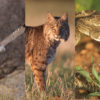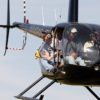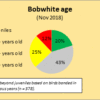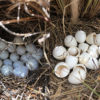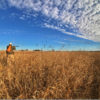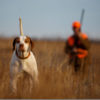
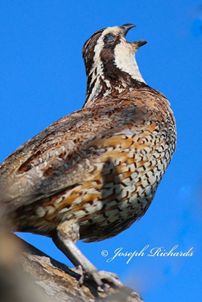 I don’t know about you, but in such a crazy world as we’ve gone through given the coronavirus pandemic, it would be nice to hear some reassuring voices—a chorus of bobwhite whistles would suffice for me. While coronavirus forecasts aren’t looking good over the next month, I think we’ll be pleased with the number of whistling quails we hear while we’re “sheltering in place.”
I don’t know about you, but in such a crazy world as we’ve gone through given the coronavirus pandemic, it would be nice to hear some reassuring voices—a chorus of bobwhite whistles would suffice for me. While coronavirus forecasts aren’t looking good over the next month, I think we’ll be pleased with the number of whistling quails we hear while we’re “sheltering in place.”
March was a weird month, weather-wise. But for us weird in a good way; hardly any wind (perhaps 2 days), cloudy, seasonable weather, and several rains. Indeed, in west Texas spring has “sprung”, and the prospects look good. Quails in the Rolling Plains have adopted their annual ritual of “social distancing” (i.e., dispersal). I received my first report of bobwhites whistling on the last weekend of quail season in Stonewall County. The first bobwhite whistles at RPQRR were reported on March 18; perhaps three weeks earlier than “normal.” The mesquites at my house in San Angelo “broke bud” on March 17; about 7-10 days earlier than normal. Reports I’m hearing from south Texas aren’t as rosy; dry weather reigns there, and some managers are reporting no whistling roosters being heard during March
One unfortunate downside of the weather was that I was forced to cancel our annual March helicopter count. Trying to get our pilot scheduled on a day with sunny conditions proved too much to coordinate. I don’t fly our counts on cloudy days; cloudy conditions tend to bias our counts low.
Hopefully an early start to our nesting season will be the spark we need to kick-start a nice rebound in bird populations this fall.
There will undoubtedly be a lot of anxious ears cast skyward this month. Our official counts won’t begin until May 15. I invite all “Students of Quail” to conduct their own call counts. If you’re in south Texas, your counts could begin as early as mid-April. Please share your results with us.
Instructions for conducting spring cock call counts can be found at https://www.youtube.com/ (but choose a less windy day than we taped this webisode). For written directions, see https://wildlife.tamu.edu/files/2012/05/CountingQuail.pdf.
And if you’re tired of watching re-runs of Forensic Files on TV, check out Texas A&M University’s Natural Resources Institute’s Texas Quail Index Online Tutorial, which can be viewed at this link: https://rise.articulate.com. They seek your feedback, so if you have a chance to use these lessons, your input is welcomed. This is supposed to be accessible to everyone regardless of their experience level, so if you aren’t familiar with the TQI, then even better! Also, if you can help estimate the time it takes to go through each section, that would be helpful as well. Send your comments to Amanda Gobeli at amanda.gobeli@ag.tamu.edu.




